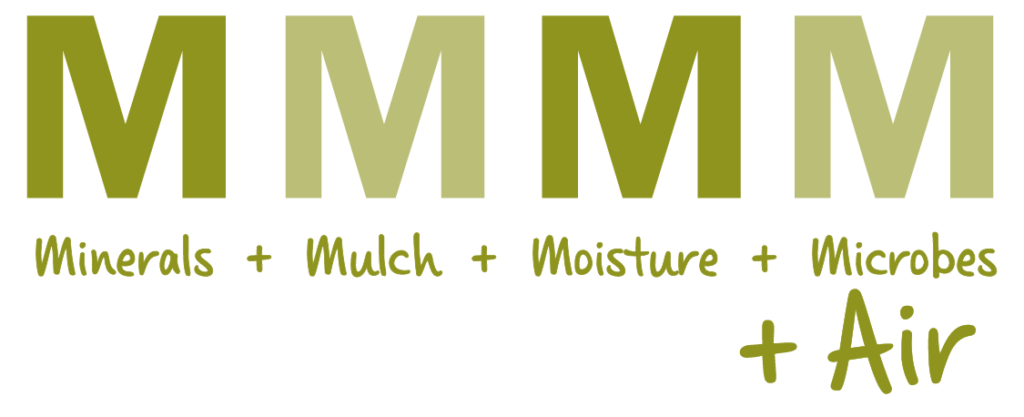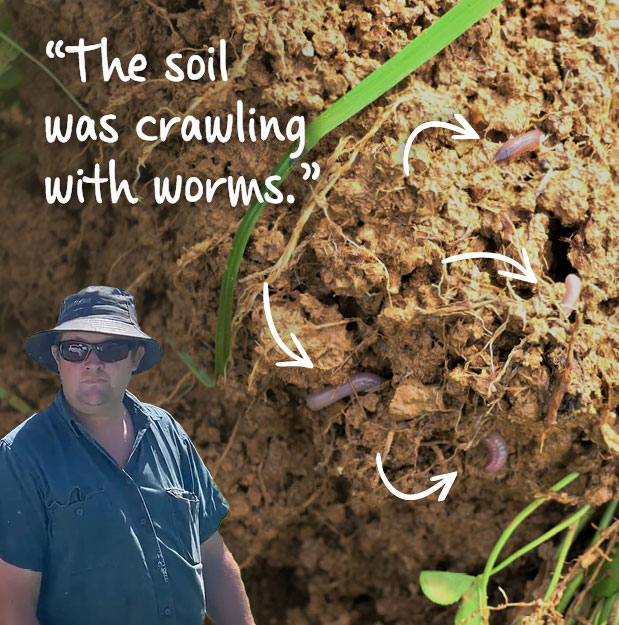Combat the biggest issue your soil faces after extended wet weather…
Aerobic microbes in soil are bacteria and fungi that require oxygen to survive. When soil becomes waterlogged, aerobic microbes are depleted, impacting nutrient cycling, soil health and subsequently crop production.
The Importance of Soil Microbes
Aerobic microbes are prevalent in well-drained soils and play a vital role in decomposition, nutrient cycling and soil health. These microbes help break down organic matter, making nutrients available to plants and improving soil structure.
The balance between aerobic and anaerobic microbes needs to be at least 3:1 and ideally a ratio of 10:1. When soil is waterlogged for 24 hours, aerobic microbes are depleted by 25% and after 72 hours, they are all but extinguished. Subsequently, anaerobic microbes multiply, causing the soil to have a sour or rotten smell.
Saturated soils lack oxygen, leading to reduced nutrient availability, shallow root systems, stunted growth, and increased risk of disease.
Nutrients, particularly water-soluble nitrogen, phosphorus and potassium can be lost through denitrification and leaching.
Reduced uptake of minerals in pasture can also affect livestock nutrition and restrict weight gain.
Waterlogged soil can take 6 months or longer to return to normal aerobic health and there are practical steps that you can take to support that process.

The impact of water logged soil on Soil Biology:
- after 24hrs – 25% loss in biological activity
- 48hrs – 50% loss in biological activity
- 72hrs – Soil becomes anaerobic (no oxygen) and aerobic microbes are extinguished.
- It can take 6 months or longer for soil to return to normal aerobic health
Balance is the Key to Restore Soil Fertility
There are 5 elements that are essential to rebuild fertility in your soil.

Minerals
Over decades of farming, many mineral elements have been depleted from the soil. The inclusion of a broad-spectrum mineral and trace element fertiliser such as NatraMin into your soil management program can assist to restore the mineral balance and stimulate microbe and worm activity.
Mulch
Microbe and worm activity helps to convert mulch into humus in your soil. A green manure crop, especially legumes, provides an excellent source of mulch. Animal manure, plant roots and stubble also provide valuable sources of mulch.
Moisture
Humus in the soil creates a storehouse for moisture and nutrients. Soil with 3% organic carbon can hold 5 times more moisture compared to soil with 1% organic carbon. Heightened water holding capacity can make a significant difference to your crop.
Air
The level of soil aeration can greatly impact the species and population of the microbial community. Although some micro-organisms can survive in flooded or compacted soils, most require a substantial supply of oxygen.
When one of these elements is out of balance, all other elements are impacted. So, when soil is waterlogged, the excess moisture eliminates air from the soil profile, impacts the microbial population as well as depleting soil carbon and mineral nutrition.
Once your soil has dried out sufficiently, soil aeration (where practicable) and the application of minerals and mulch are the important steps to take to regenerate soil fertility.
Quick recovery of soil and pasture after extreme wet
“Four months after the first application of NatraMin at 300kg/ha we could see our pasture starting to change. After cutting 36 round bales our pasture bounced back and was ready to graze 4 weeks after cutting.
We have reduced the use of Urea down from 125kg to 80kg per hectare. Where NatraMin has been applied, the clover is good and there are no longer any urine patches in the pasture.
After extremely heavy rainfall in 2022, even though the pasture was doing well, the soil was compacted. A few months later, the soil had recovered and was soft to dig, the root ball was massive and the soil was crawling with worms.” – Paul Beaumont, Dorrigo NSW.

Nutrition for your crop
Because most common fertilisers are salt based and highly soluble, key elements like nitrogen, phosphorus, potassium and sulphur are easily leached from the soil profile.
NatraMin is not water-soluble and will not leach away with heavy rainfall. Rather than ‘feeding your crop’ with just water-soluble NPK fertiliser, NatraMin ‘feeds your soil’ by restoring broad spectrum minerals.
A soil test is recommended to identify crop requirements. After repeat applications of NatraMin, water-soluble fertiliser can often be reduced.
Build Fertility in your soil for Long Term Results
Remineralisation with NatraMin is the first step to take to restore the natural mineral balance to your soil. NatraMin provides bio-activated broad spectrum minerals and trace elements and is formulated to stimulate the biological activity in the soil.
When integrated with soil management strategies, NatraMin can assist to produce living, healthy and balanced soil capable of producing high yielding crops, pastures and livestock.
Repeat applications of NatraMin are vital to restore mineral elements to your soil. As soil fertility improves, water-soluble fertiliser can often be reduced.
“We used the NatraMin program to bring bare paddocks back into production. Two years later, we couldn’t tell the difference between flood-affected and unaffected areas.” — Mark Muller, Woodenbong NSW
How AgSolutions Can Help
With the possibility of QRAA funding to support the purchase of soil conditioners like NatraMin, rebuilding doesn’t have to break the bank. Our team can develop custom soil management programs—whether you’re conventional, organic, or somewhere in between.
Get in touch with our nutrition team on 1800 81 57 57 for personalised advice and support.
Together, we can rebuild the foundation of your farm—starting from the soil up.
